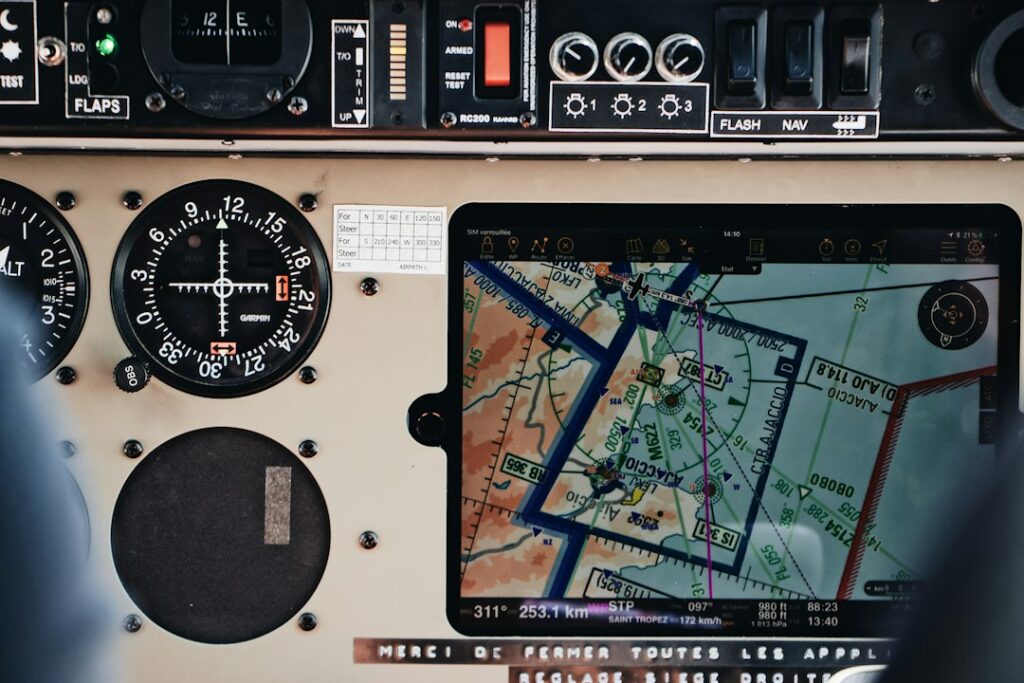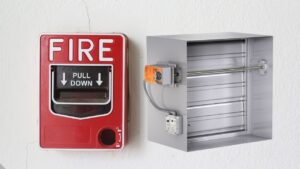Access control solutions refer to the measures and systems put in place to regulate and control access to a commercial premises. These solutions are designed to ensure that only authorized individuals are granted entry, while keeping unauthorized individuals out. Access control solutions play a crucial role in commercial security, as they help protect valuable assets, sensitive information, and the safety of employees and customers.
In today’s world, where security threats are becoming increasingly sophisticated, it is essential for businesses to have robust access control solutions in place. These solutions not only provide a physical barrier against unauthorized access, but also offer advanced features such as biometric authentication and integration with other security systems. By implementing access control solutions, businesses can significantly enhance their security posture and mitigate the risks and threats they face.
Key Takeaways
- Access control solutions are essential for commercial security.
- Access control solutions can prevent unauthorized access and protect valuable assets.
- There are various types of access control solutions available for commercial security, including biometric and card-based systems.
- Implementing access control solutions can improve security, increase efficiency, and reduce costs.
- When choosing access control solutions, it is important to consider factors such as budget, scalability, and integration with existing systems.
Understanding the Importance of Access Control in Commercial Settings
Commercial premises face a wide range of risks and threats that can have serious consequences for the business. These risks include theft, vandalism, unauthorized access, workplace violence, and even terrorism. Without proper access control measures in place, businesses are vulnerable to these risks, which can result in financial losses, damage to reputation, and harm to employees and customers.
Access control solutions provide several benefits in mitigating these risks and threats. Firstly, they act as a deterrent by making it difficult for unauthorized individuals to gain entry. This alone can significantly reduce the likelihood of security incidents occurring. Secondly, access control solutions enable businesses to have complete visibility and control over who enters their premises. This allows them to track and monitor access events in real-time, ensuring that only authorized individuals are granted entry.
Types of Access Control Solutions for Commercial Security
There are several types of access control solutions available for commercial security. These can be broadly categorized into physical access control solutions, logical access control solutions, and biometric access control solutions.
Physical access control solutions include measures such as locks, keys, access cards, and turnstiles. These solutions are designed to physically restrict access to a commercial premises. For example, access cards can be programmed to only allow entry to specific areas at specific times, while turnstiles can prevent unauthorized individuals from entering a building.
Logical access control solutions, on the other hand, are focused on controlling access to computer systems and networks. These solutions use usernames, passwords, and other authentication methods to ensure that only authorized individuals can access sensitive information and perform certain actions.
Biometric access control solutions utilize unique physical or behavioral characteristics of individuals for authentication purposes. These characteristics can include fingerprints, iris patterns, facial recognition, or even voice recognition. Biometric access control solutions offer a high level of security and accuracy, as they are difficult to forge or replicate.
Benefits of Implementing Access Control Solutions in Commercial Premises
Implementing access control solutions in commercial premises offers several benefits that go beyond just security.
Enhanced security and safety: Access control solutions provide a robust layer of security that helps protect valuable assets, sensitive information, and the safety of employees and customers. By ensuring that only authorized individuals have access to certain areas, businesses can prevent theft, vandalism, and workplace violence.
Improved operational efficiency: Access control solutions can streamline operations by automating processes such as granting access permissions and tracking attendance. This eliminates the need for manual processes such as issuing keys or maintaining paper-based logs. Additionally, access control solutions can integrate with other systems such as time and attendance or visitor management systems, further improving operational efficiency.
Reduced costs and losses: By preventing unauthorized access and security incidents, businesses can avoid financial losses associated with theft, vandalism, or legal liabilities. Access control solutions also help reduce costs by eliminating the need for physical keys or locks that may need to be replaced if lost or stolen.
Factors to Consider When Choosing Access Control Solutions for Commercial Security
When choosing access control solutions for commercial security, there are several factors that businesses need to consider.
Security requirements and objectives: Businesses should first assess their security requirements and objectives. This includes identifying the areas that need to be secured, the level of security required, and any specific compliance or regulatory requirements that need to be met.
Budget and resources: Access control solutions can vary significantly in terms of cost and complexity. Businesses should consider their budget and available resources when choosing a solution. It is important to strike a balance between cost and effectiveness, ensuring that the chosen solution meets the security requirements without exceeding the budget.
Scalability and flexibility: Businesses should also consider the scalability and flexibility of the access control solution. As the business grows or changes, the access control solution should be able to accommodate these changes. This includes the ability to add or remove users, modify access permissions, or integrate with other systems.
Installation and Integration of Access Control Solutions in Commercial Settings
The installation and integration of access control solutions in commercial settings require careful planning and preparation.
Planning and preparation: Before installation, businesses should conduct a thorough assessment of their premises to identify the areas that need to be secured and determine the best placement for access control devices. This may involve conducting a risk assessment or consulting with security professionals. Additionally, businesses should ensure that they have the necessary infrastructure in place, such as power supply and network connectivity.
Installation and configuration: Once the planning phase is complete, businesses can proceed with the installation of access control devices. This may involve installing locks, readers, controllers, or other hardware components. It is important to follow manufacturer guidelines and best practices during installation to ensure proper functionality. After installation, the devices need to be configured according to the business’s security requirements, including setting up access permissions and user profiles.
Integration with other security systems: Access control solutions can be integrated with other security systems such as video surveillance, intrusion detection, or alarm systems. This integration allows for a more comprehensive and effective security solution. Businesses should ensure that the access control solution they choose is compatible with their existing security systems and can be easily integrated.
Maintenance and Upgrades of Access Control Solutions for Commercial Security
Regular maintenance and upgrades of access control solutions are essential to ensure their effectiveness and reliability.
Importance of regular maintenance and upgrades: Access control devices, like any other electronic equipment, require regular maintenance to ensure proper functionality. This includes cleaning, testing, and inspecting the devices for any signs of wear or damage. Additionally, access control software may require updates or patches to address security vulnerabilities or add new features. Regular maintenance and upgrades help prevent system failures, improve performance, and ensure that the access control solution remains secure.
Best practices for maintenance and upgrades: Businesses should follow best practices for maintenance and upgrades of access control solutions. This includes creating a maintenance schedule and adhering to it, conducting regular inspections and tests, and keeping track of any issues or incidents. It is also important to work with reputable vendors or service providers who can provide support and assistance when needed.
Common challenges and solutions: Businesses may face challenges when it comes to maintaining and upgrading access control solutions. These challenges can include compatibility issues, software bugs, or hardware failures. To overcome these challenges, businesses should have a contingency plan in place, such as backup systems or redundant devices. It is also important to have a dedicated team or point of contact responsible for managing the access control solution and addressing any issues that arise.
Best Practices for Maximizing the Effectiveness of Access Control Solutions in Commercial Settings
To maximize the effectiveness of access control solutions in commercial settings, businesses should follow best practices.
Employee training and awareness: Employees should be trained on how to properly use the access control system and understand the importance of following security protocols. This includes not sharing access credentials, reporting any suspicious activity, or properly securing access cards or keys. Regular training and awareness programs can help reinforce these practices and ensure that employees are actively engaged in maintaining security.
Regular testing and evaluation: Businesses should regularly test and evaluate their access control system to identify any vulnerabilities or weaknesses. This can include conducting penetration tests, simulating security incidents, or reviewing access logs. By proactively identifying and addressing any issues, businesses can ensure that their access control solution remains effective and secure.
Continuous improvement and optimization: Access control solutions should be continuously monitored and optimized to adapt to changing security requirements or emerging threats. This can include updating access permissions, adding new security features, or integrating with new technologies. By continuously improving the access control solution, businesses can stay one step ahead of potential risks and threats.
Case Studies: Successful Implementation of Access Control Solutions in Commercial Security
There are numerous examples of successful implementation of access control solutions in different industries.
In the banking industry, access control solutions have been instrumental in protecting sensitive customer information and preventing unauthorized access to financial systems. Banks have implemented biometric access control solutions that use fingerprint or iris recognition to authenticate employees and customers. This has significantly enhanced security while providing a seamless and convenient user experience.
In the healthcare industry, access control solutions have helped protect patient privacy and ensure the safety of staff and visitors. Hospitals have implemented physical access control solutions such as access cards or turnstiles to restrict entry to certain areas, such as operating rooms or medication storage areas. This has helped prevent theft or tampering with sensitive medical equipment or supplies.
In the retail industry, access control solutions have been used to prevent shoplifting and reduce shrinkage. Retailers have implemented logical access control solutions that require employees to log in to point-of-sale systems using unique usernames and passwords. This helps track employee activity and prevents unauthorized transactions.
These case studies highlight the diverse applications of access control solutions in different industries and demonstrate their effectiveness in enhancing security.
Future Trends and Innovations in Access Control Solutions for Commercial Security
The future of access control solutions in commercial security is likely to be shaped by emerging technologies and innovations.
Emerging technologies such as artificial intelligence (AI) and machine learning are expected to play a significant role in access control solutions. These technologies can enable more advanced authentication methods, such as behavioral biometrics or facial recognition, that are more secure and convenient.
The Internet of Things (IoT) is also expected to have an impact on access control solutions. IoT devices can be integrated with access control systems to provide additional layers of security. For example, smart locks can be connected to a central access control system, allowing for remote monitoring and control.
Predictive analytics is another trend that is likely to shape the future of access control solutions. By analyzing data from access control systems, businesses can identify patterns or anomalies that may indicate potential security threats. This can help businesses take proactive measures to prevent security incidents before they occur.
In conclusion, access control solutions play a crucial role in commercial security by regulating and controlling access to premises. These solutions provide enhanced security and safety, improved operational efficiency, and reduced costs and losses. When choosing access control solutions, businesses should consider their security requirements, budget, and scalability. The installation and integration of access control solutions require careful planning and preparation. Regular maintenance and upgrades are essential to ensure the effectiveness and reliability of access control solutions. Best practices for maximizing the effectiveness of access control solutions include employee training and awareness, regular testing and evaluation, and continuous improvement. Successful implementation of access control solutions can be seen in various industries such as banking, healthcare, and retail. The future of access control solutions is likely to be shaped by emerging technologies such as AI, IoT, and predictive analytics.
FAQs
What is access control?
Access control is a security technique that regulates who or what can view or use resources in a computing environment. It is a fundamental concept in security that minimizes risk to the business or organization.
What are access control solutions?
Access control solutions are security systems that are designed to control access to a physical or virtual space. These solutions can be used to restrict access to a building, a room, a computer system, or a network.
What are the benefits of access control solutions?
Access control solutions provide a number of benefits, including increased security, improved safety, reduced risk of theft or damage, and enhanced accountability. They can also help to streamline operations and reduce costs by automating access control processes.
What types of access control solutions are available?
There are several types of access control solutions available, including biometric systems, card readers, keypads, and mobile access control. Each type of solution has its own advantages and disadvantages, and the best solution for a particular organization will depend on its specific needs and requirements.
How do access control solutions work?
Access control solutions work by verifying the identity of an individual or device attempting to access a resource. This can be done through a variety of methods, including biometric scans, card readers, or keypads. Once the identity is verified, the system will either grant or deny access based on the permissions assigned to that individual or device.
What are some best practices for implementing access control solutions?
Some best practices for implementing access control solutions include conducting a thorough risk assessment, defining clear access control policies and procedures, selecting the appropriate technology, and regularly reviewing and updating the system to ensure it remains effective. It is also important to provide training to employees and other stakeholders to ensure they understand how to use the system properly.









